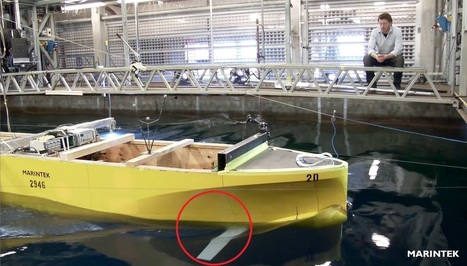"Animal Dynamics, a company formed of biomechanics from the University of Oxford’s Department of Zoology, islooking to break the human-powered water speed record in a canoe propelled by an underwater fin, mimicking the way that dolphins or whales swim. The team believes that a flapping fin design could be a more efficient than a traditional propeller mechanism, as it works with the natural flow of water, rather than against it. Instead of using paddles, the catamaran-style canoe has a hydrofoil under its bow which is operated by a driver using a pedaling system. The cycling motion drives a fin downwards through the water, creating the thrust to propel the canoe forwards."
Research and publish the best content.
Get Started for FREE
Sign up with Facebook Sign up with X
I don't have a Facebook or a X account
Already have an account: Login
 Your new post is loading... Your new post is loading...
 Your new post is loading... Your new post is loading...
|
|












